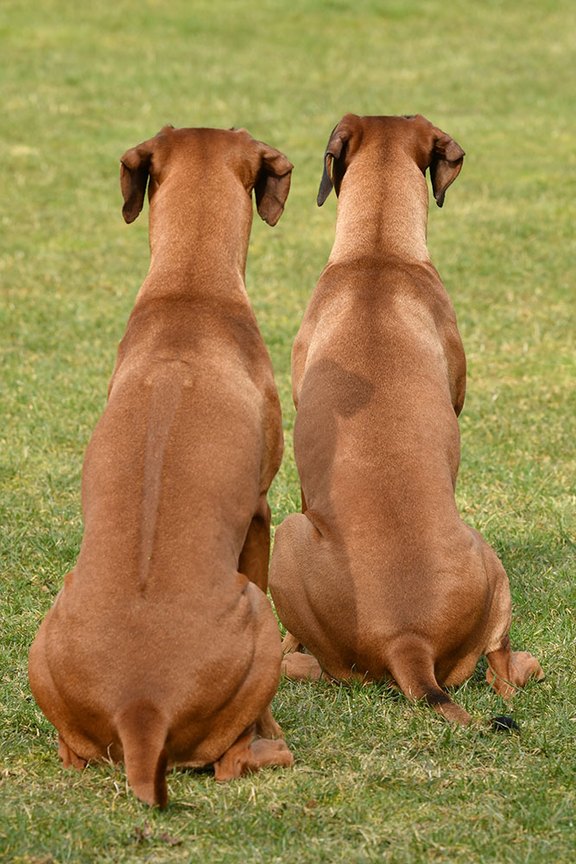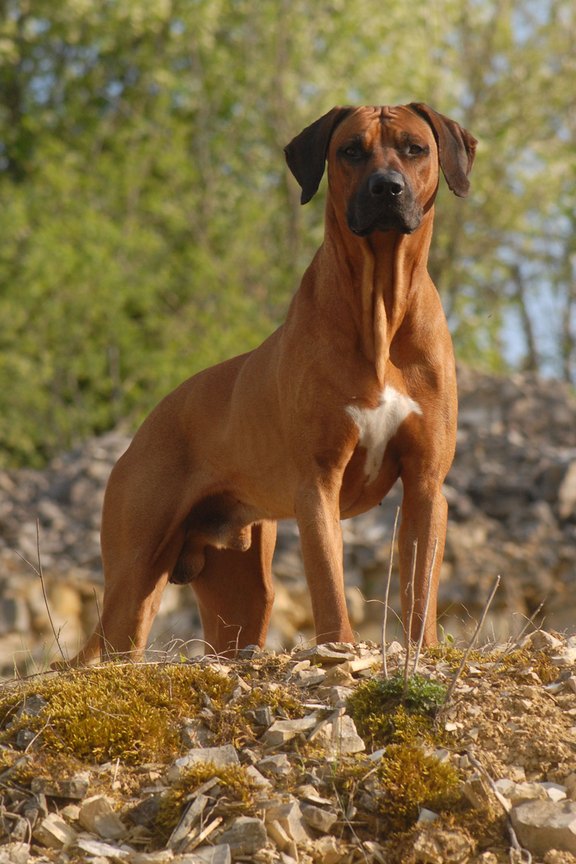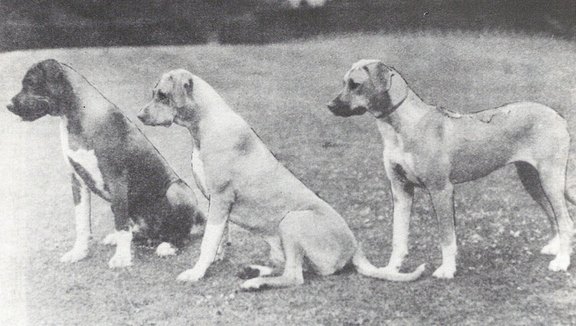The Idea Behind the Lionhound - A New Dog Breed with a Future

For over 17 years I have passionately advocated for the acceptance of ridgeless dogs within Rhodesian Ridgeback breeding in Germany. While breeding programs abroad have already embraced ridgeless Ridgebacks, in Germany they remain heavily stigmatized and obviously for many breeders it is the worst "fault" you can have in a litter. It is not of interest whether these dogs have genetic diversity or whether it is possible to control the genetic defect Dermoid Sinus (DS). The only important thing is the ridge, because it is in the name of the breed and that is why Rhodesian Ridgeback breeders under no circumstances would do without this special characteristic.
Ignoring Scientific Evidence
In 2008 there was the first breeding program "To avoid the Dermoid Sinus" in cooperation with the VDH, at that time under me as 1st chairman of the Club ELSA. This breeding trial provided for the mating of ridgeless and ridged Ridgebacks. The program was discontinued in 2018 with the following justification: "From today's point of view, the breeding trial from 2008, namely the reduction of the risk of Dermoid Sinus by mating ridgeless dogs with ridged dogs in this form is no longer necessary, as it is now known that homozygous dogs for the ridge allele have an increased risk."
The VDH Scientific Advisory Board subsequently issued the recommendation "to integrate ridgeless dogs into the breeding program". Homozygous ridge carriers should only be bred to ridgeless dogs and homozygous dogs should no longer be bred to each other. In the long term, only ridge-carrying and ridgeless dogs should be bred to each other if there is enough breeding potential. What has happened in the VDH clubs since then? Nothing! Although the recommendation of the Scientific Advisory Board is still valid, they steadfastly refuse to implement it.
What has happened in the VDH clubs since then? Nothing! Although the recommendation of the Scientific Advisory Board is still valid, they steadfastly refuse to implement it.
Even the tightening of the Animal Welfare Dog Ordinance has not led to those responsible waking up and rethink. The regulation offers the opportunity to establish breeding programs.
The Path to the Lionhound – A Vision Becomes Reality

All this has led me to think about what can be done for these wonderful dogs, whose characteristics and nature I value and love so much. The ridge is a mutation that we have bred to perfection. It should simply no longer be in the foreground, as is the case with the Rhodesian Ridgeback. We have to do something in terms of breeding that takes us further with regard to the agony breeding trait Dermoid Sinus - that is the great challenge of our time. As the ridge gives the Rhodesian Ridgeback breed its name, there is a lack of acceptance of dogs that do not have a ridge.
I have been thinking about establishing a new breed for some time now. However, I always hoped that something would happen with the Ridgebacks in terms of the breeding of ridgeless dogs - unfortunately this was not the case.
This is how the idea for the Lionhound came about - a "new breed" that is not actually new, because no foreign breeds are crossed in and you stay within an already established breed, but without breeding specifically for the ridge mutation - on the contrary. The ridge is the least important detail and absolutely superfluous for the dog - only people like to have "something special".

White on the chest of the Rhodesian Ridgeback is also absolutely undesirable, even if it is permitted according to the standard. Many breed judges regard it as a blemish at dog shows, the dogs are downgraded accordingly and white paws lead to exclusion from breeding even as puppies.
If you look at the origins of the Rhodesian Ridgeback breed and the dogs that were bred at that time, then you know where the white comes from. It has always been in the genes of the breed, but has largely been lost through extreme selection, which does not exactly speak for the preservation of genetic diversity.
The fact that white chest spots are not just a color is also confirmed by breeding experiments with foxes, which were carried out by Dimitri Belyaev as early as 1959 (Article National Geographic, study).
A Necessary Step for the Future of Dog Breeding
On June 6, 2025, the FCI has taken over the change to the KUSA standard. Instead of being a little more flexible with some cosmetic "faults", exactly the opposite was done: "incorrect crowns of the ridge" were now specified as a fault in the standard and "dogs without a ridge" are considered a disqualifying fault. This is a step in the wrong direction, but it is the path the Rhodesian Ridgeback is now definitely taking, and it is one of the reasons why I decided to go in a different direction.
One of the main goals in breeding the Lionhound is to maintain and expand genetic diversity by making such cosmetic "faults" less important.
18. August 2025
Monika Pehr

